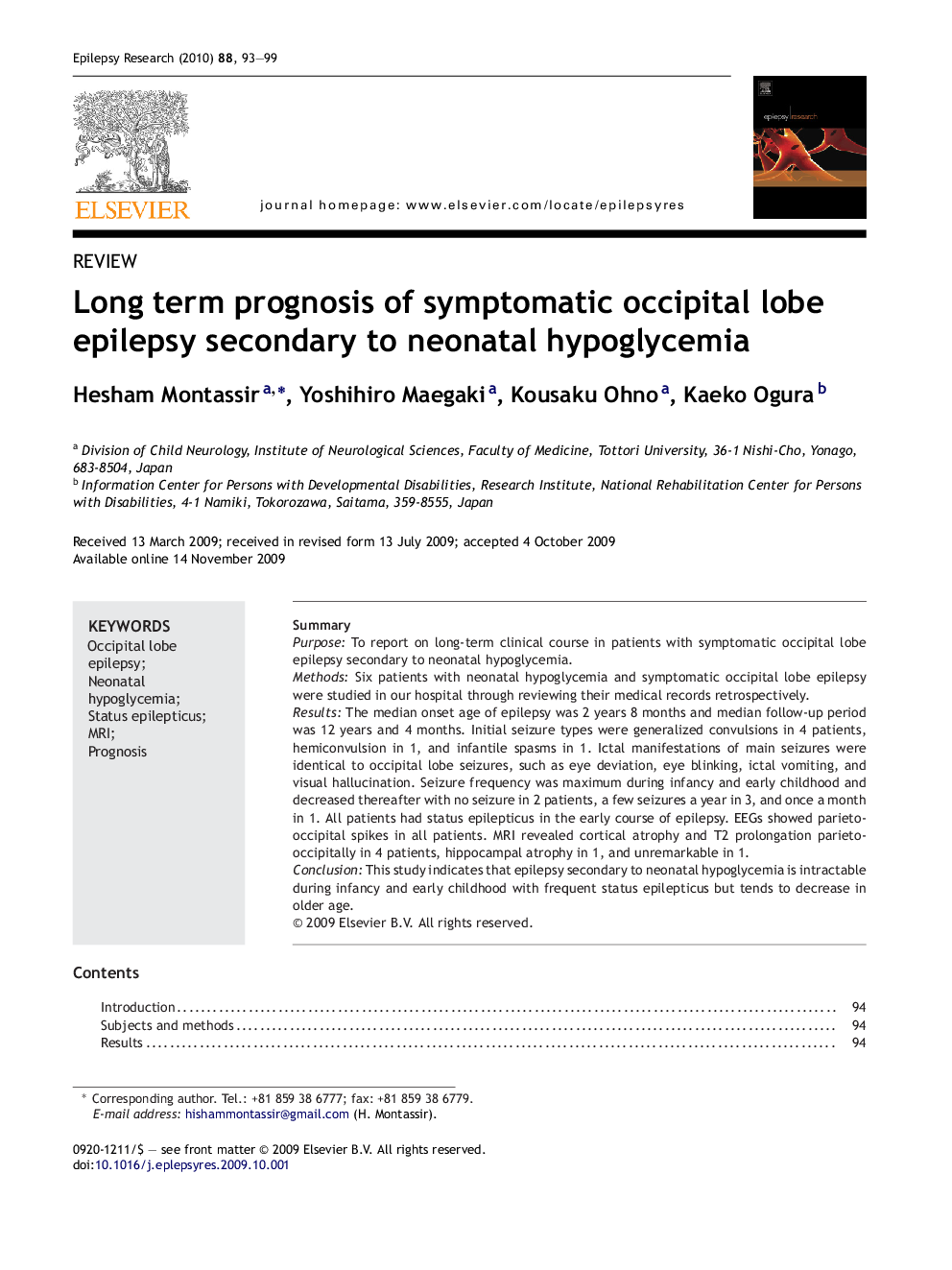| Article ID | Journal | Published Year | Pages | File Type |
|---|---|---|---|---|
| 3052660 | Epilepsy Research | 2010 | 7 Pages |
SummaryPurposeTo report on long-term clinical course in patients with symptomatic occipital lobe epilepsy secondary to neonatal hypoglycemia.MethodsSix patients with neonatal hypoglycemia and symptomatic occipital lobe epilepsy were studied in our hospital through reviewing their medical records retrospectively.ResultsThe median onset age of epilepsy was 2 years 8 months and median follow-up period was 12 years and 4 months. Initial seizure types were generalized convulsions in 4 patients, hemiconvulsion in 1, and infantile spasms in 1. Ictal manifestations of main seizures were identical to occipital lobe seizures, such as eye deviation, eye blinking, ictal vomiting, and visual hallucination. Seizure frequency was maximum during infancy and early childhood and decreased thereafter with no seizure in 2 patients, a few seizures a year in 3, and once a month in 1. All patients had status epilepticus in the early course of epilepsy. EEGs showed parieto-occipital spikes in all patients. MRI revealed cortical atrophy and T2 prolongation parieto-occipitally in 4 patients, hippocampal atrophy in 1, and unremarkable in 1.ConclusionThis study indicates that epilepsy secondary to neonatal hypoglycemia is intractable during infancy and early childhood with frequent status epilepticus but tends to decrease in older age.
